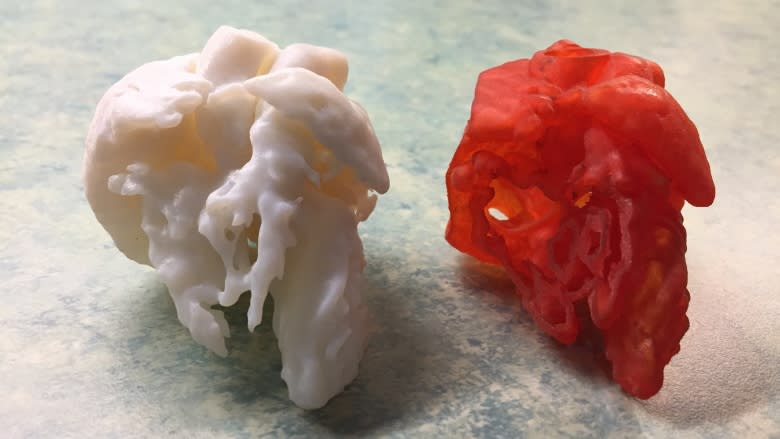3D printer lets surgeons hold a child's heart before surgery starts
Doctors at the IWK Health Centre in Halifax are using 3D printed models of hearts to get a better look at congenital heart disease in children and rehearse complex surgical procedures.
The models are based on scans from an infant and 13 year old, both of who have congenital heart disease. The models are made from acrylic and a rubber-like material call NinjaFlex. NinjaFlex can be manipulated and sliced.
"For a surgeon to be able to hold these hearts in his or her hands and look at the anatomy and plan what's going to happen next, is huge," said Dr. Deborah Thompson, a cardiac radiologist at the IWK.
"You could practise on something like this."
Dr. Robert Chen, a pediatric cardiologist, said the 3D modelling technique gives a surgeon as much information as possible ahead of a procedure.
The highly accurate model hearts will also become important teaching tools for future surgeons. Students will be able to work on them and compare them to traditional 2D scans, which can help them grasp the intricacies of operating on a child's heart.
"We can now store and save and show these students what these hearts look like in three dimensions," said Chen.
"It's easy to read about things, but until you've actually seen it, it's very difficult to understand why it has to be done that way."
The leading heart defect
The two models at the IWK were created in Toronto, but the hospital staff in Halifax hope to have their own 3D printer capable of making the hearts in the near future.
"Quite honestly, the day I can print these myself, I'll be jumping up and down because that's what I've wanted from the outset, to do it for every heart that we want to see," said Chen.
About one in every 80 to 100 children is born with congenital heart disease, which makes it the most common type of birth defect.



